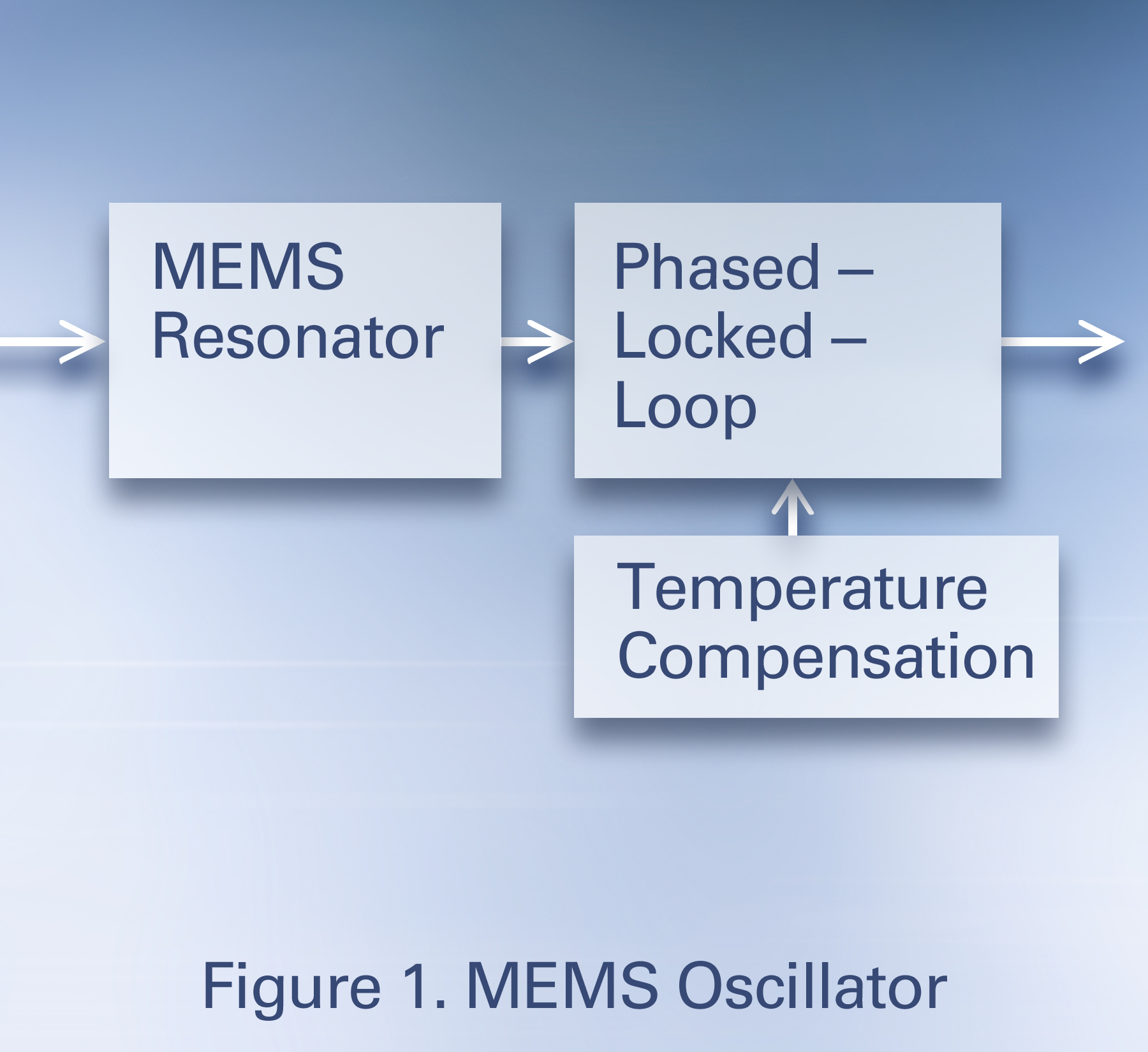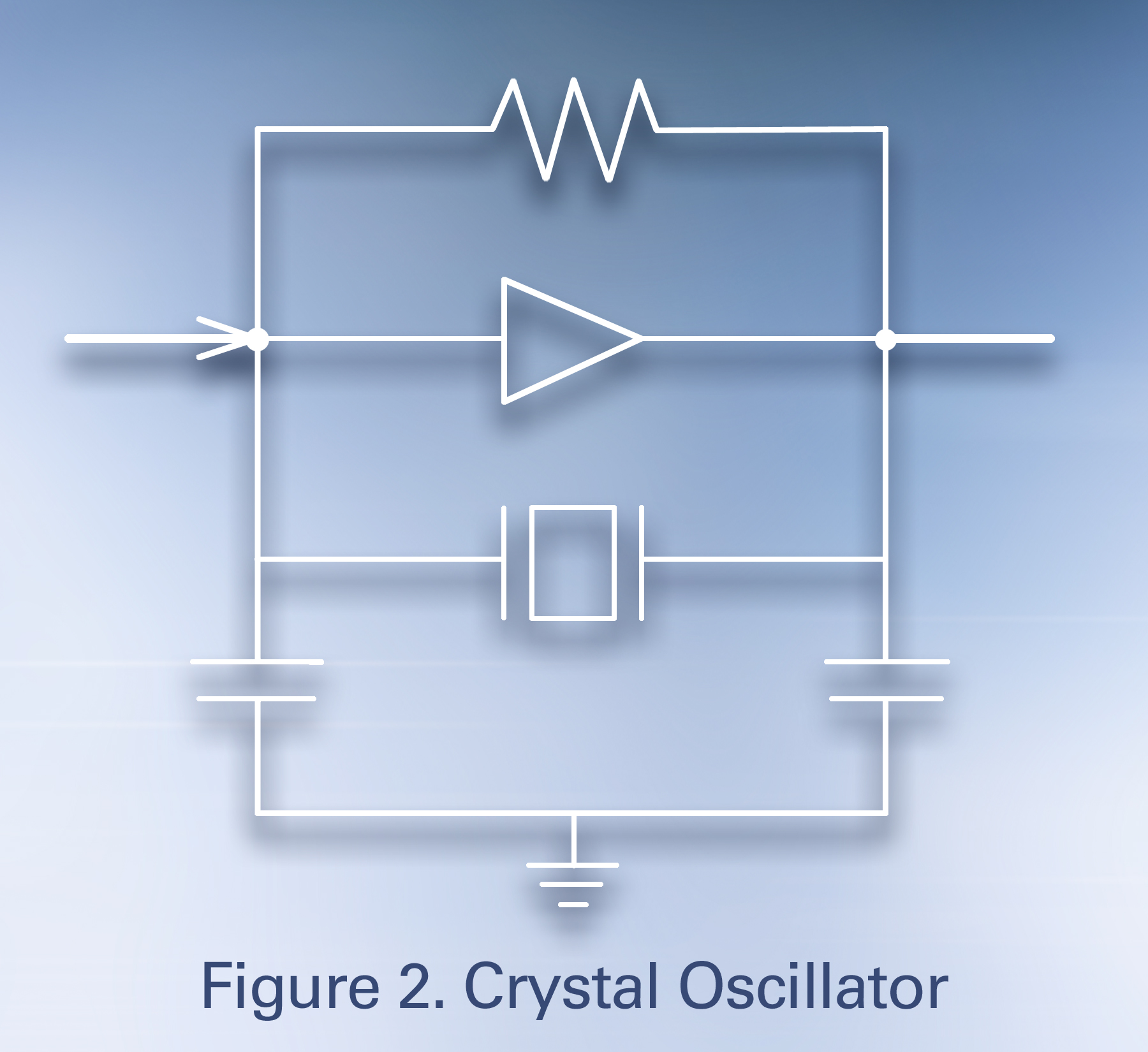MEMS technology is now employed in a wide range of sensor and actuator applications. In addition, an emerging use of MEMS technology is as a replacement for traditional crystal oscillators. Here, we will compare the characteristics and advantages of MEMS vs. crystals to clarify where each has a place in advanced electronics design.
Evolution of Oscillator Technologies
The piezoelectric crystal resonator (crystal oscillator) was invented by Dr. Walter Cady and patented in the early 1920s. In 1921, Cady designed the first circuit to control frequencies based on quartz crystal resonator and received two fundamental patents on resonators and their applications to radio in 1923. Subsequently, crystal oscillators rapidly became the standard for controlling frequency in radio communications and other early electronic applications.
The rapid development of higher frequency electronics applications in the latter part of the last century has driven the development of a spectrum of oscillator technologies. Lower-cost alternatives to crystal oscillators have been developed to provide timing in applications where frequency accuracy is less critical. Ceramic resonators, for example, are found in applications like VCRs, telephones, and toys. More recently, MEMS oscillators have emerged as an alternative to crystals.
According to a paper presented in 2008 by the Southwest Center of Microsystems Education at the University of New Mexico, “The core technologies used in MEMS oscillators have been in development since the mid-1960s but have only been sufficiently advanced for commercial applications since 2006. MEMS oscillators are a valid alternative to older, more established quartz crystal oscillators, offering better resilience against vibration and mechanical shock and reliability with respect to temperature variation.”

One would perhaps conclude that crystal oscillators have lost their place in the hierarchy of standards, but this is far from reality. The block diagram of a Si-MEMS device, as shown in Figure 1, consists of a MEMS resonator, a stabilizing phase-locked-loop, and additional circuitry to provide for temperature stability. Applications in aerospace technology, military guidance systems, downhole drilling controls, and others have evolved even more quickly, producing an entire range of applications that are far more suited to advanced crystal oscillators than the best-performing MEMS devices. While more costly than MEMS, the intrinsic simplicity of the crystal oscillator adds to their reliability.

MEMS Performance Claims
A search for details about MEMS oscillator performance leads to a lot of conflicting information. In preparation for this article, two extensive reports were reviewed:
A Wikipedia article on the subject is the source for the citation (above) from the Southwest Center of Microsystems Education. While this is a remarkably informative article, Wikipedia actually flags it as having some “content written as advertisement.” I suppose it is fair to assume that many Wiki posts suffer from this. Even so, the article is well worth the time to peruse.
Perhaps a more relevant source of information, as related to high-reliability applications, is found is in a white paper published by Epson in September 2014. While this paper is admittedly produced by a company comparing one of its own crystal oscillators to comparable MEMS devices, the results are worthy of consideration.
The paper compared performance in five critical areas:
- Phase noise and phase jitter
- Laboratory measurements demonstrated the crystal oscillator has much better phase noise than the other two Si-MEMS oscillators.
- Power consumption
- The crystal oscillator has the lowest power consumption, 1.5 mA, 5x lower than the “standard” Si-MEMS oscillator and 20x lower than the “low-jitter” Si-MEMS oscillator.
- Crystal oscillators have the lowest power consumption because they have the advantage of the fundamental harmonic oscillation of the oscillating source and a simple circuit structure.
- By contrast, Si-MEMS oscillators consume more power because they have more circuitry.
- The crystal oscillator has the lowest power consumption, 1.5 mA, 5x lower than the “standard” Si-MEMS oscillator and 20x lower than the “low-jitter” Si-MEMS oscillator.
- Start-up characteristics
- Using an oscillator with fast startup allows shorter wake-up cycles and longer battery life compared to MEMS devices.
- Frequency temperature characteristics
- At first inspection, the Si-MEMS oscillators seem to have better frequency vs. temperature characteristics, but closer inspection shows that the Si-MEMS oscillators have frequency jumps when the division ratio switches to compensate for temperature changes.
- Frequency stability
- The “standard” Si-MEMS oscillator has frequency jumps on the well in excess of most wireless radio standards. The “low-jitter” Si-MEMS oscillator has better performance, but the Quartz oscillator is by far more stable.
What’s the Take-Away from This?
MEMS oscillators require more complex circuitry to perform basic functions and to compensate for temperature variation and other variables (Figure 1). Despite their intrinsically more complex structure, MEMS are typically considerably less expensive than crystal oscillators. Additionally, with other functions being implemented for emerging MEMS topologies, the adaption of low-cost MEMS oscillators is clearly going to increase. Moreover, MEMS oscillators can handle shock and vibration pretty well. On the downside, MEMS oscillators typically exhibit a low Q, which results in the poor phase noise and jitter as evidenced in the referenced white paper. Finally, MEMS device circuity simply can’t handle space-related radiation exposure.
Taking all of this into account, there are an enormous number of applications where MEMS oscillators are the preferred solution. Lower cost and acceptable performance levels make these devices ideal for high-volume consumer products, including mobile phones, toys, games, automotive entertainment/navigation systems, to name a few. In some aerospace applications where short-term performance (one and done) is important but long-term stability is not, MEMS might also be considered.
So, where does that leave the classic high-performance crystal oscillator? The simple answer might be in high-performance applications where a “service call” is simply out of the question. Space applications like low earth orbit (LEO) and geosynchronous orbit satellites is one area. High-temperature applications like down-hole drilling would be another. Military and avionics applications like missile guidance and navigation systems where temperature and frequency stability are critical is another. Crystal oscillators are also found in high-definition video displays where anything but exceptional performance is plain to see.
MEMS technology is making great inroads into oscillator applications where their lower cost offers an attractive solution. But the world of ultra-high-reliability is and will remain the realm of the venerable crystal oscillator.

